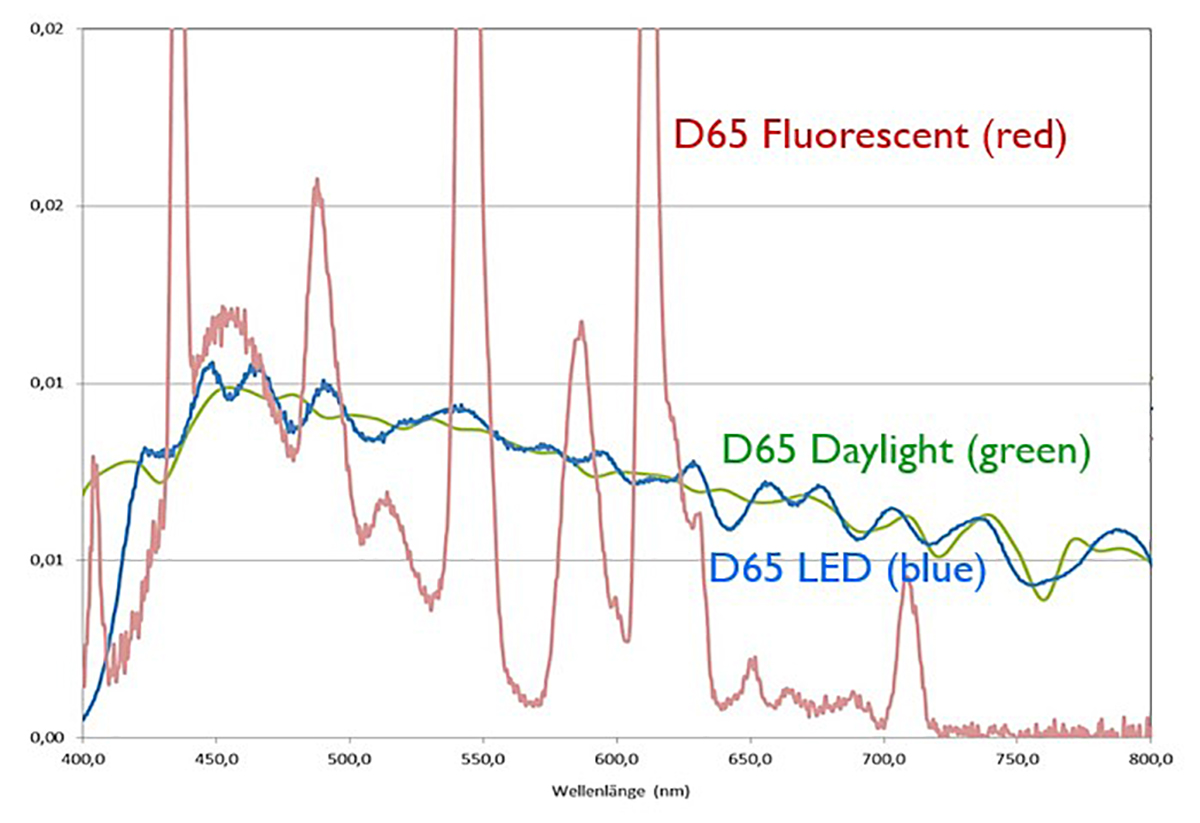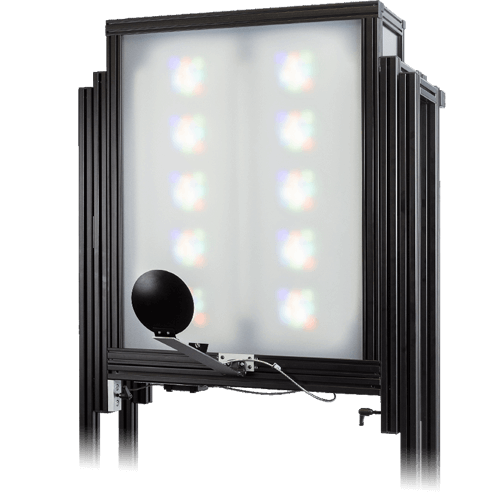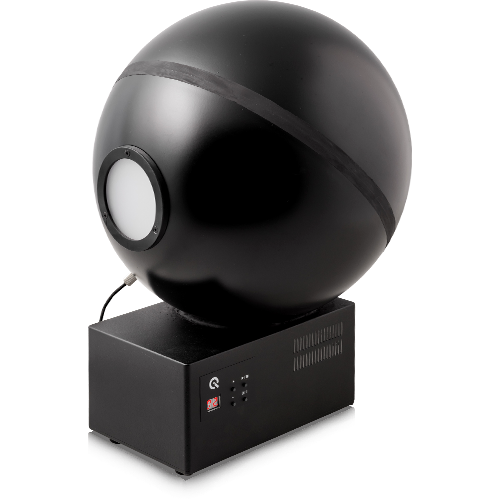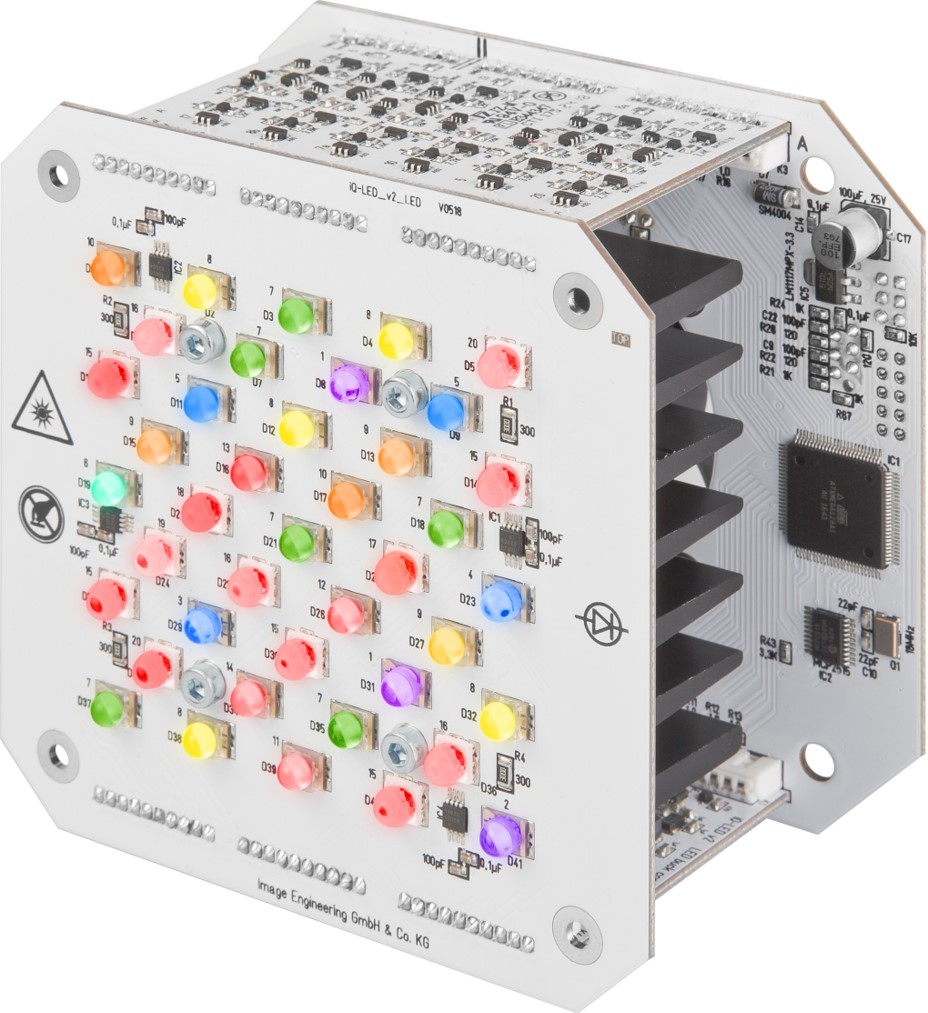Naturally, one of the most important aspects of image evaluation and calibration is the illumination. Over the last few years, consumers and producers alike have been gravitating more and more towards iQ-LED light sources. Digital camera companies are also quickly recognizing the many advantages of iQ-LED light sources in image quality test and calibration devices and fixtures.
What is a multi-channel narrow-band LED light source?
A narrow-band LED light source produces light in a small region of wavelengths. Multiple channels in the iQ-LED improve the curve fitting for all wavelength ranges. A broad wavelength range of approx. 380 – 820 nm, increases the accuracy of spectral reproduction. There are 20 channels in an iQ-LED module, and whenBy selecting LEDs with the correct wavelengths and running each at the right power, it is possible to create a single modular light source capable of emulating many different light sources.
Essentially, this light source, with a spectrometer for feedback and software to control the iQ-LED sources, is programmable to produce the spectral output and power necessary to match, for example, illuminant A, D50, D65, or a Planckian blackbody radiator of any useful color temperature.
11 advantages of narrow-band LED light sources
As a result of the numerous advantages, many companies are now using LED light sources in their daily testing and calibration.
1. Generate any light spectrum with just one device
With an LED programmable light source, you can create any kind of light, with just one illumination device. There is no need for multiple lights, or filters that can get scratched, wrinkled or lost.
2. The Future is LED
LEDs are steadily replacing fluorescents and tungsten lights in our everyday lives. As LED lighting becomes more widespread, testing and calibrating with fluorescent sources has become less practical.
3. Emulates daylight much more accurately than fluorescent
While daylight illuminant simulators for D50 and D65 have been in use for a long time, these sources are very “spiky” and represent a poor match for the daylight they are supposed to represent.
Combining narrow-band LEDs, on the other hand, produces a light that is a much better match for daylight. No nearly discontinuous spikes, just well-managed light output that closely matches the specs for daylight sources.

4. Extended life and stable output
LEDs have an exceptionally long working life easily exceeding 10,000 hours of continuous use. This longevity reduces the need to frequently replace bulbs and ballasts of conventional light sources in a production environment and makes them ideal for camera calibration where long, stable life is essential.
5. Low power
LEDs use less power than tungsten or fluorescents. That helps keep things cool in the lab thereby reducing your energy bill.
6. Strong linearity
The linearity of LEDs can be maintained to within about 1%. That’s convenient when you have to test a wide range of light levels.
7. Simplistic control
LED devices are managed by uniquely designed control software (API also available) and a spectrometer to ensure accuracy. With full control over your illumination, a test engineer can simplify their process while also achieving more precise test results.
8. Spectrometer feedback
With a built-in spectroradiometer, it is easy to manage LED calibration, light source generation, and continuous monitoring of the light output for both spectral quality and intensity.
9. Small, lightweight, modular
An LED module is very small and light and thus can fit almost anywhere. These modules can be built into a variety of illuminant housings. They are equally as effective in illuminators for reflective test charts and subjects, in illuminators for transparent test charts, and for integrating spheres. All options provide excellent uniformity.


10. Lighting geometry does not change
If you’ve been using tungsten and fluorescent light sources in the lab or the production floor, you understand that changing from tungsten to a fluorescent-based daylight illuminator inevitably involves a change in the lighting geometry as you change light fixtures. An LED module, however, can create tungsten, daylight, or almost any other defined illuminant without having the geometry of the light itself change.
11. IR extension
Narrow-band LED modules can also be made with near-IR output as well. So, if your application requires near-IR – out to 1050nm – then iQ-LED has you covered.
Learn more
With so many distinct advantages, it’s easy to see why narrow-band LED light sources have become the go-to light sources in imaging labs around the world. Engineers across various industries have come to rely on the accuracy and control that only an LED-based light source can provide.
Still have questions or want to make an inquiry? Please don’t hesitate to contact our support team for more information and advice.


